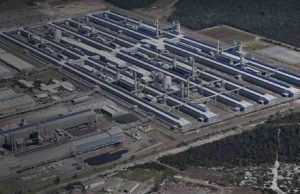The Australian Energy Market Commission has locked in new rules designed to help consumers – and the grid – get more out of energy assets like rooftop solar, battery storage and electric vehicles. But critics say the changes miss a major opportunity to boost competition in the retail sector.
In a final determination published on Thursday, the Australian Energy Market Commission says the new rules – requested by AEMO and put forward in a draft in February – will help unlock substantial benefits from Consumer Energy Resources (CER) for consumers and the system as a whole.
In particular, they make it easier for energy service providers to separate and manage “flexible” CER – like EV chargers and batteries – from “passive loads” like fridges and lights, leading to more product and service options for consumers.
To this end, market participants will be able to use in-built metering in things like EV chargers, eliminating the need for separate meters.
“This means consumers could potentially receive separate billing for their EV charging, distinct from their regular household energy use,” the AEMC says. “If they choose, they could also trade excess energy from their EV back to the grid.”
“We are committed to reforms that pave the way for the innovation required to meet the challenge of integrating CER, knowing that if we do nothing, all consumers will face higher costs,” AEMC chief Anna Collyer said on Friday.
“If these resources are integrated well, the power system will operate more smoothly, and consumers and industry will enjoy the benefits of cheaper supply.
“A range of studies has estimated the net benefit of effective integration and coordination of CER to be up to $6.3 billion by 2040.”
But as was the complaint in February, when the draft of the rules was put forward, the AEMC’s claim that the changes will “promote innovation and competition in the electricity retail sector” falls short, extending only to businesses and not to households.
While the new rules mean large customers can engage multiple energy service providers at their premises – to say, sign up to an EV charging plan under a completely different contract and with a different provider from the rest of their power supply – the same does not apply to households.
“You can choose what petrol station you go to, to fill up your petrol car at the moment [and] you can go to different EV fast-chargers of your choice when you’re out on the road…. But you won’t be able to choose a different provider to fill up with at home,” said CER expert Gabrielle Kuiper, in February.
“We don’t have a particularly competitive electricity market, already – it’s dominated by the Big Three players.
“Distributed resources provide the opportunity, really, to open up competition. That’s only possible if the regulator allows that and they’ve said no to increased competition [for households] at this point.”
What the new rules will do for households is establish secondary settlement points, removing the need to establish a second physical connection to the distribution network. They also allow for in-built measurement capability in technology like batteries and EV chargers to be used, removing the need to install a separate meter to the device.
As the full report from AEMC explains, this means more products and service options for households, and the ability to more easily participate in virtual power plants, as long as it is all done through the one energy provider.
And as Kuiper said in February, an acknowledgement that the use of traditional retail electricity meters is not the only way to monitor and manage CER is a clear plus – and is to be applauded.
“I think this is the first time the AEMC has acknowledged that there are smart devices out there that can give accurate metering, like in inverters, without being retail quality meters that conform to … all of the requirements for billing,” Kuiper said.
And Collyer, herself, acknowledges that these are small steps, among many, along the road to a rapidly changing electricity market.
“These reforms are crucial pieces of the CER puzzle,” she said on Friday. “They create opportunities for innovation, helping consumers reduce bills and participate more actively in our energy system, while improving grid management and reducing emissions.
“Additionally, we have published draft rules to create greater visibility of price-responsive resources, such as household batteries, to make it easier for them to participate in the market. We think this could help AEMO and networks to operate the system more efficiently, ultimately leading to lower prices and emissions.”
Stephanie Bashir, the founder and principal of Nexa Advisory, says the rule changes confirmed by the AEMC today will require some other fundamental changes in the way the market works for their benefits to be realised.
“Data transparency is key,” Bashir told One Step Off The Grid. “It is imperative that DNSPs [distribution network service providers] publicly share all network operational data. Immediate access to real-time energy use data empowers customers to make on-the-spot decisions to reduce energy consumption, providing insights into individual technologies.”
Electricity tariff reform is needed, too, Bashir says.
“Given the limited innovation in network tariffs and the critical role of network tariffs in facilitating participation from CER, further work is needed to ensure DNSPs are developing approaches that will support CER engagement.
“Competition and innovation are essential for fostering a decentralised energy future and supporting the flexibility offered by CER. Addressing market power imbalances in the retail sector and strong ringfencing of regulated network monopolies is key,” Bashir said.








